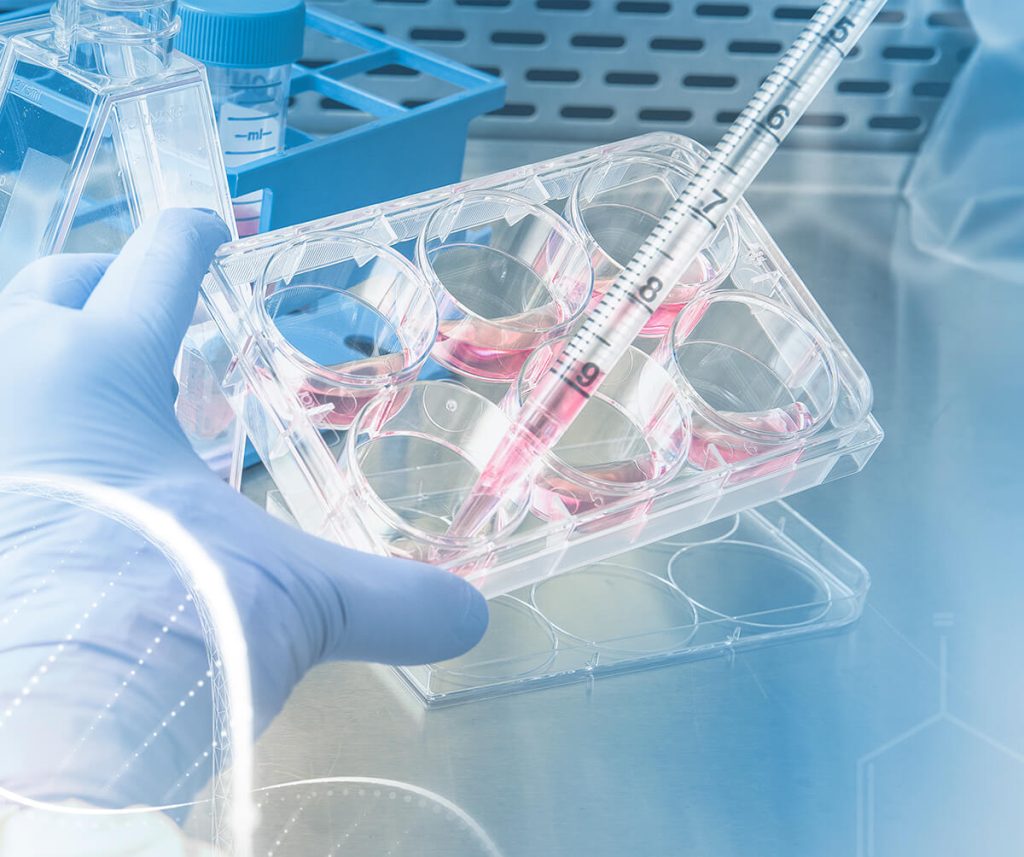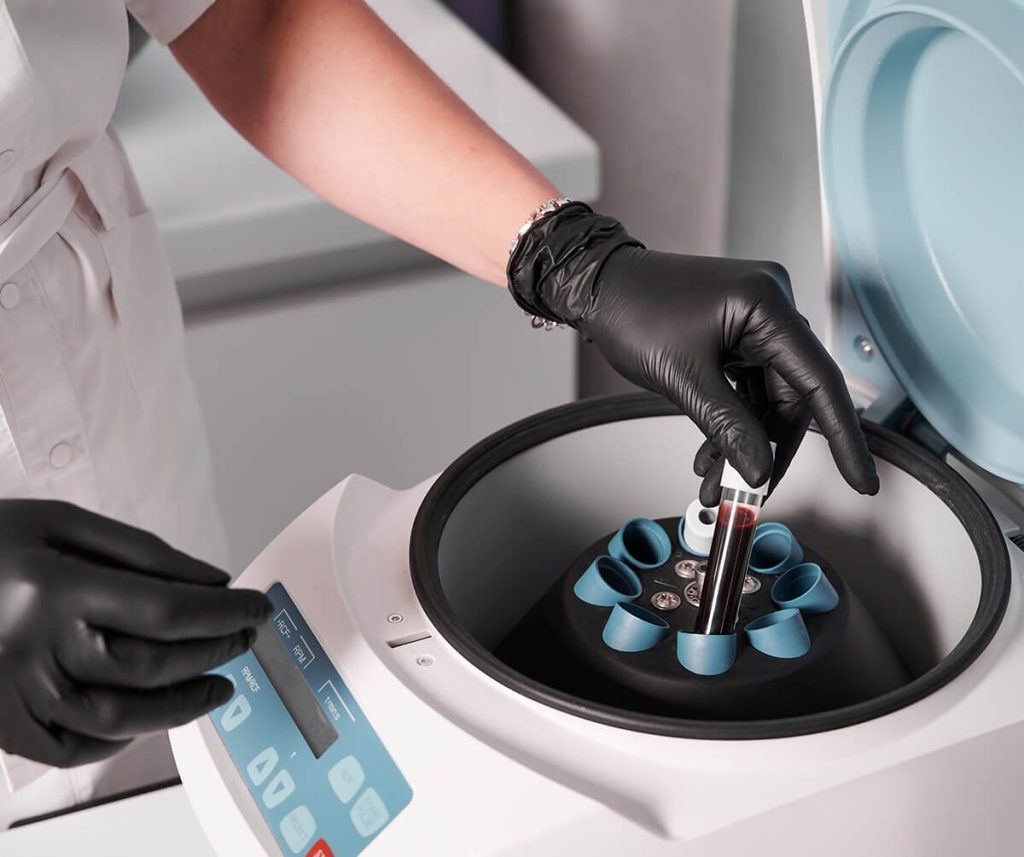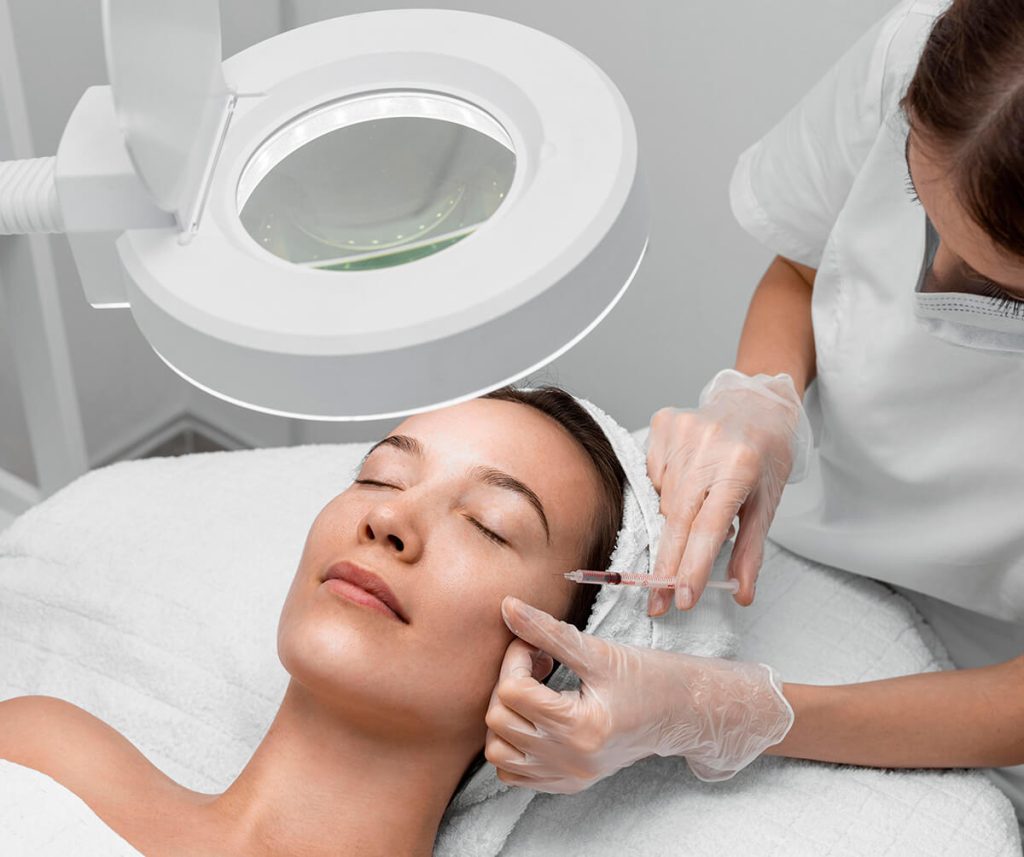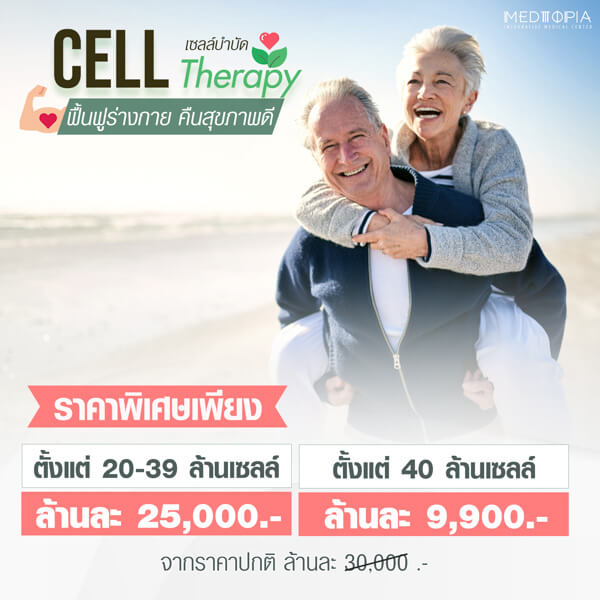Cell therapy involves the use of cells or cellular components to help restore vitality, stimulate repair, and promote the regeneration of the body’s own cells. It supports rejuvenation and enhances overall health, allowing the body to experience a renewed sense of youth and well-being.
In the early stages of cell therapy, organs from animals were ground and used for treatment. Later, the process evolved to extract specific cells or cellular components. Today, advancements allow for the cultivation of cells and the selection of only the strongest stem cells. However, most people are unaware that stem cells vary greatly in quality—ranging from relatively inexpensive options costing tens of thousands of baht to premium-grade stem cells priced in the millions. The higher the cost, the better the quality—reflected in the cell storage process, cultivation standards, and precise selection of top-performing cells, which together ensure both safety and optimal effectiveness.
There are five key standards for high-quality stem cell production:
-
GTP (Good Tissue Practice) – Ensures that the source tissue for cultivation is of high quality and free from contamination.
-
ATMP (Advanced Therapy Medicinal Products) or US-FDA – Governs the production of stem cells for medical use.
-
ISCT (International Society for Cell & Gene Therapy) – Certifies the integrity and suitability of stem cells.
-
ISO Certification – Ensures safety and accuracy throughout every stage of the process.
-
GMP (Good Manufacturing Practice) – Guarantees consistency and high standards in all production processes.

Currently, cell therapy is being used to treat or alleviate symptoms of various diseases—especially those involving chronic inflammation. These include allergies, autoimmune diseases, liver disease, type 2 diabetes, cardiovascular diseases, dementia, Parkinson’s disease, tendon or muscle inflammation, hormonal imbalance, and even conditions like skin aging and hair loss.
Within the skin, particularly around hair follicles, there’s a concentrated area of stem cells known as the “stem cell bulge.” These cells are responsible for repairing and strengthening the skin, contributing to healthy, radiant skin. However, as we age, not only does the number of stem cells decline, but their function also weakens. This leads to dull, fragile skin.
Stimulating stem cells through cell therapy can help:
-
Increase the number of stem cells in the skin.
-
Enhance their function.
-
Repair skin damage caused by pollution, toxins, and harsh cosmetics used in daily life.
This approach offers a regenerative solution for both internal health conditions and external signs of aging.

Growth factor
Growth factor is a protein that stimulates various cells to grow, repair themselves, produce essential substances, or develop into specific types of cells. For example, it can stimulate skin cells to produce collagen and elastin, making the skin beautiful and strong. It also helps cells divide to heal wounds, promotes the formation of cartilage in knee joints, and stimulates hair follicles to produce thicker, stronger, and more numerous hairs.
The easiest and highest quality source for extracting growth factors is blood, which can come from either oneself or another person. Using one’s own blood provides a sense of safety since it is autologous, but the downside is that the type and concentration of growth factors cannot be precisely controlled, which may reduce treatment effectiveness.
On the other hand, when growth factors are extracted from donor blood, the quality, type, and concentration can be carefully tested and tailored to meet specific needs. However, there is a risk of contamination by substances or pathogens, so the production process for growth factors from donor blood must adhere to strict standards and thorough screening to ensure maximum safety. This makes the cost of growth factors derived from donor blood higher than those from one’s own blood, but the quality and effectiveness are also superior.
Growth Factor (cell repair stimulator) or PRP (Platelet-Rich Plasma)
Blood is mainly composed of four components: plasma, red blood cells, white blood cells, and platelets. Inside the platelets, there are substances that stimulate cell repair. Injecting platelets into the knee joint means injecting these cell repair stimulators directly into the knee, helping the knee cells to recover better and reducing inflammation effectively. This accelerates the repair process in the knee, making it faster than usual. It is a method that is effective, safe, highly efficient, and has minimal side effects.
However, using platelet-rich plasma derived from one’s own blood sometimes cannot control the exact amount of Growth Factor. In some individuals, the platelets may contain diluted Growth Factor, so when their own platelets are injected, the results may not be noticeable. Currently, Growth Factors can be extracted from platelets and prepared as a ready-to-use formula, which has a higher concentration of Growth Factor. This allows for better control over the type and amount, making it more suitable for patients with joint degeneration.
Injecting with ready-made Growth Factor products is therefore more effective and shows clearer results than using one’s own blood. It is ideal for patients with mild to moderate osteoarthritis. For those with moderate osteoarthritis, about three consecutive injections may be needed to see clear results. After the injection, there may be mild pain and swelling, which usually lasts no longer than three days.

MSCs (Mesenchymal Stomal/Stem cells)
Between children and elderly people, who has more vitality?
Stem cells are similar. Stem cells from newborns usually have higher energy and efficiency than those from older individuals. Even stem cells from children that have been frozen for several years can experience a decline in effectiveness. Nowadays, stem cells are extracted from newborns—such as from amniotic fluid, umbilical cord tissue, cord blood, or the placenta—which are believed to be young, highly energetic stem cells with great abilities to reduce inflammation and repair the body.
However, most people do not realize that stem cells themselves come in various qualities, ranging in price from a few tens of thousands of baht to several million baht. Moreover, stem cells from different sources have different capabilities. Higher prices usually indicate better quality, including how the cells are collected, cultured, and selected to ensure safety and maximum effectiveness.
-
The GTP standard ensures careful selection of tissue sources for cell cultivation, guaranteeing high-quality tissue free from contamination.
-
The ATMP or US-FDA standard applies to the production process for medical use.
-
The ISCT standard is used to inspect the quality of complete and suitable stem cells.
-
The ISO standard certifies accuracy and safety in every step of production.
-
The GMP standard ensures that all production processes maintain consistent quality.
Although stem cells are recognized for their high quality and effectiveness, not all diseases or conditions can be treated with stem cells. Sometimes, using extracts from cells, which are smaller in size, can better reach the injured tissue and improve symptoms more effectively than whole cells. Therefore, selecting the appropriate and suitable type of cell therapy is also very important.
| Cell Therapy | |
|---|---|
| List | Price |
| From 20 to 39 million cells | 25,000 THB per million cells |
| From 40 million cells and above | 9,900 THB per million cells |
| Full price | 30,000 THB per million cells |
| – | |

 ไทย
ไทย
















